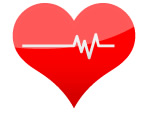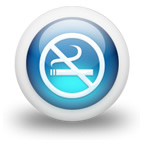Cardiovascular Diseases
Cardiovascular Diseases

Cardiovascular diseases, including ischemic heart disease, are the major cause of death worldwide. The most frequent expression of ischemic heart disease is myocardial infarction or angina pectoris, followed by cerebrovascular accident and peripheral artery disease, all of which have a common cause: arteriosclerosis.
The disease mechanism is the following: fatty materials such as cholesterol accumulate in the arteries, which thickens the arterial wall and may obstruct the flow of blood.
A series of factors have been identified that increase an individual’s risk of cardiovascular disease. These include high cholesterol, hypertension, smoking habits, sedentary lifestyle, overweight, and diabetes. In addition, some factors protect us from these diseases. These include eating a balanced diet, maintaining our ideal weight, and engaging in regular physical activity.
Controlling cholesterol levels
Cholesterol is a type of fatty material that is found in blood and in all of our cells. All healthy individuals have cholesterol in our bodies because it is an essential component of cell membranes and some hormones and participates in many normal processes of the human body. Nonetheless, an excess of cholesterol in the blood increases the risk of myocardial infarction or angina pectoris.
What is cholesterol?
 Our two primary sources of cholesterol are the foods we eat and the cholesterol produced by our bodies. The liver and other specialized cells produce about 75% of our blood cholesterol. The remaining 25% comes from the foods in our diet.
Our two primary sources of cholesterol are the foods we eat and the cholesterol produced by our bodies. The liver and other specialized cells produce about 75% of our blood cholesterol. The remaining 25% comes from the foods in our diet.
Low-density lipoprotein (LDL) cholesterol is known as “bad” cholesterol. Large quantities of cholesterol circulating in the blood can obstruct the arteries, which increases the risk of suffering a heart attack or stroke. The human organism has the capacity to produce LDL cholesterol, but many people inherit the capacity to produce much more than they need. Consuming saturated fats, transfats, and cholesterol will also increase risk to a large extent.
It is important that we understand our cholesterol level. Cholesterol is measured in milligrams per deciliter of blood (mg/dl). A cholesterol level above 200 mg/dl places an individual in the high risk category, making it important to take preventive measures.
How can I lower my cholesterol level?
It is very important to know that we are all capable of lowering our cholesterol level, because this is a way of reducing the risk of a heart attack or stroke. In consultation with healthcare professionals, the use of drug therapy, a healthy diet, and physical activity can all help to reduce the cholesterol that is circulating in the blood. The recommendations to keep cholesterol levels below the recommended levels include periodic blood testing; following a diet that is low in cholesterol, saturated fats and transfats and high in healthy foods such as fruits, vegetables, and fish that protect cardiovascular health; maintaining a height-appropriate weight; and remaining physically active.
Blood pressure
Simply stated, high blood pressure can be life threatening. It is often called the “silent killer” because there are no symptoms. Research has shown that 1 in 3 adults in the world have high blood pressure, and 20% of them don’t know that they have it. Of those who have been diagnosed with high blood pressure, about 65% are taking a blood pressure medication. However, only about 45% of those taking medication have their blood pressure under control. Fortunately, other factors can protect us from these diseases, such as eating a balanced diet, maintaining a healthy weight, and engaging in regular physical exercise. Regular monitoring and following a doctor’s recommendations will help to keep blood pressure within a normal range, which is key to reducing the risk of a disabling stroke.
What is hypertension?
There are many things we still do not understand about the physiopathology of hypertension. In other words, we are still not 100% certain, for all cases, about the changes in bodily function that cause high blood pressure. However, we do have ample evidence about its impact as a risk factor for cardiovascular disease.
In people with high blood pressure, blood circulates in their arteries with more force than necessary, which increases the pressure on the artery walls. The arteries contract and become damaged. The body tries to repair the damage with a fibrous tissue that leaves a scar. Unfortunately, these scars collect platelets (“sticky cell fragments” that help blood to clot) and white cells (which are important to fight infection) and the result can be blockage and clumps of cells that reduce the interior diameter of the artery.
Why is it important to control blood pressure?
 High blood pressure is the single most important risk factor for stroke.
High blood pressure is the single most important risk factor for stroke.
Excess pressure on the artery wall eventually produces a narrower pathway for blood, reducing the volume of blood that reaches vital organs (brain, heart, lungs, kidneys, liver and pancreas). Without blood, tissue will die; this is the cause of stroke, heart attack, kidney failure, and even heart failure.
Maintaining a blood pressure that is within recommended limits helps to:
- Avoid the narrowing of the artery walls (“hardening of the arteries”).
- Avoid forcing the heart to pump harder to move the blood through the blockages.
- Protect the body by allowing all of the tissues to receive the blood flow they require, and with it the oxygen and nutrients they need to work properly.
Why is blood pressure related to stroke?
Maintaining blood pressure within proper limits decreases the risk of narrowing the walls of the arteries and reducing the arterial lumen (diameter of the artery). This also avoids making the heart work harder than normal to pump blood through a narrowed artery and helps to deliver proper blood flow to all of the tissues in the body, providing all the oxygen and nutrients they need.
Heart Health Recommendations
The importance of diet
 Many studies have shown that a diet rich in healthy foods such as fruits, vegetables and fish will protect cardiovascular health. Scientific associations have recommended 5 daily servings of fruits and vegetables, reduced intake of sodium (eg, limited use of salt and processed foods), and up to 3 tablespoons of olive oil or a handful of nuts per day.
Many studies have shown that a diet rich in healthy foods such as fruits, vegetables and fish will protect cardiovascular health. Scientific associations have recommended 5 daily servings of fruits and vegetables, reduced intake of sodium (eg, limited use of salt and processed foods), and up to 3 tablespoons of olive oil or a handful of nuts per day.
Excess weight is just one of the consequences of not eating a balanced diet. However, it could be the most important because of the number of people who are overweight. The heart and arteries of overweight individuals must work harder to support the extra burden.
It is also important to limit alcohol consumption because it is circulated with the blood, which increases the pressure on the arteries, impairs the artery paving cells (endothelium) function, and raises the heart rate (beats per minute).
The benefits of regular physical activity
 Regular physical activity has a favorable effect on the classic risk factors for cardiovascular diseases. It improves not only the LDL cholesterol but increases the “good” cholesterol (HDL), lowers blood pressure, and prevents adult-onset diabetes.
Regular physical activity has a favorable effect on the classic risk factors for cardiovascular diseases. It improves not only the LDL cholesterol but increases the “good” cholesterol (HDL), lowers blood pressure, and prevents adult-onset diabetes.
It is important to choose a simple exercise program that can be sustained and is appropriate for each individual’s physical condition, and to exercise regularly. At a minimum, the recommendation is to walk briskly and take stairways rather than elevators. Although the optimum exercise time is an hour each day, any amount of physical activity is better than none. It is not necessary to set aside a one-hour block of time for physical activity; the beneficial effect is cumulative over the course of the day.
The health hazards of smoking
 In addition to its impact on a smoker’s risk of cardiovascular diseases, tobacco use causes lung and stomach cancers, as well as cancers in other parts of the body. Smokers have an average life expectancy that is 10 years less than nonsmokers, with a lower quality of life. Seeing older smokers should not give anyone a false sense of security: stories of smokers who reach an advanced age in good physical shape and can enjoy a robust quality of life are exceptional and anecdotal.
In addition to its impact on a smoker’s risk of cardiovascular diseases, tobacco use causes lung and stomach cancers, as well as cancers in other parts of the body. Smokers have an average life expectancy that is 10 years less than nonsmokers, with a lower quality of life. Seeing older smokers should not give anyone a false sense of security: stories of smokers who reach an advanced age in good physical shape and can enjoy a robust quality of life are exceptional and anecdotal.
The recommendation is simple: Don’t smoke. If you are a smoker, stop smoking – and help others to quit. You have the right to a smoke-free environment: passive smoking (breathing tobacco smoke when somebody else smokes in your presence) is also harmful. Tobacco companies use clinical techniques to calculate the dose of nicotine per cigarette required to produce addiction. Nicotine addiction is physical: that is why most smokers find it so difficult to quit smoking. Once a smoker is addicted, smoking is not a voluntary act because each cigarette simply calms the symptoms of withdrawal: the apparent pleasure is nothing more than reduced anxiety and a temporary break from the physical need for a dose of nicotine.
Smokers can reverse the cumulated adverse effects of tobacco by 50% each year and balance their risk to that of never-smokers in just 5 to 10 years.
If you are a smoker and need help to quit smoking, your physician can prescribe medications that will help you withstand the withdrawal symptoms. Don’t wait until tomorrow. Quit now, and take advantage of the reversibility of your risk.



